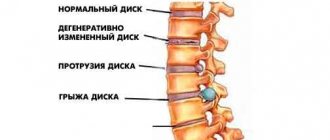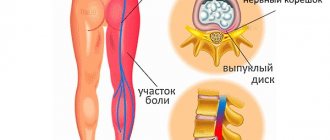Febrile temperature is a body temperature at which the thermometer readings are in the range from 38.1°C to 39°C. A person complaining of a fever should see a doctor, as the condition may indicate a serious health problem. There can be many reasons for the occurrence of high temperature, and only an experienced specialist can determine how to return the patient to good health.
Infectious causes
2:1463
The most common cause of low-grade fever is infection. Thus, most common ARVIs are accompanied by malaise, headache and joint pain, runny nose, cough and low-grade fever. Some childhood infections (rubella, chickenpox) are not severe, with a low temperature. In all these cases there are clear signs of illness.
2:2103 2:4
With the long-term existence of a focus of inflammation, all symptoms disappear or become habitual. Therefore, the only sign of trouble remains a long-term low-grade fever. In such cases, finding the source of infection can be difficult.
2:445 2:450
Foci of infection that most often cause a prolonged rise in temperature:
2:584
- ENT diseases - pharyngitis, etc.
- Dental – carious teeth
- Gastrointestinal diseases - , , , etc.
- Inflammation of the urinary tract - pyelonephritis, urethritis, cystitis, etc.
- Inflammatory diseases of female and male genital organs -,.
- Abscesses at injection sites
- Non-healing ulcers in the elderly and sick
2:1152
If the source of inflammation is found, it will take some time to heal, since chronic infections respond less well to therapy.
2:1393 2:1398 2:1403
Toxoplasmosis
2:1439
3:1943 3:4
A very common infection, but clinical manifestations are rare. Almost all cat lovers are infected with it. In addition, you can become infected by eating undercooked meat.
3:354 3:359
Clinically significant only for pregnant women (due to the risk of pathology in the fetus) and HIV-infected people (due to the severity of the course).
3:601
In a healthy person, toxoplasmosis is present as a carrier state, sometimes causing low-grade fever and eye damage.
3:840 3:845
The infection does not require treatment (except for severe cases). It is diagnosed using ELISA (detection of antibodies), which is especially important when planning pregnancy.
3:1134 3:1139
Brucellosis
3:1171
This is a disease that is often forgotten when searching for the causes of low-grade fever. It mainly occurs in farmers and veterinarians who come into contact with farm animals.
3:1497 3:1502
Signs of the disease are varied:
3:61
- fever
- joint, muscle and headache pain
- decreased hearing and vision
- confusion
This disease is not life-threatening, but can lead to permanent changes in the psyche and motor sphere. For diagnosis, PCR is used, which accurately determines the source of the disease in the blood. Brucellosis is treated with antibiotics.
3:685 3:690
Parasitic infections
3:745
When infected with helminths, a sluggish inflammatory process may occur in the organs for a long time. And often low-grade fever is the only symptom of helminthic infestation. Therefore, in case of prolonged fever, especially combined with weight loss and digestive disorders, you need to consult a doctor and get tested.
3:1295 3:1300
Treatment of helminthic infestation is carried out with special preparations. Sometimes one dose is enough for complete recovery.
3:1537 3:4
Tuberculosis
3:38
There is a misconception that tuberculosis is a disease of the past, it is now found only in places of deprivation of liberty and only asocial people suffer from it. In fact, the number of tuberculosis patients is not decreasing, but is even increasing.
3:454
Everyone is at risk of getting sick, especially small children, health workers, students in dormitories, and soldiers in barracks. In general, the tuberculosis bacillus loves places with large concentrations of people constantly living under one roof.
3:865 3:870
4:1374 4:1379
Risk factors:
4:1410
- insufficient and unbalanced nutrition
- chronic pulmonary diseases
- diabetes
- living with a person who is a source of tuberculosis
- tuberculosis in the past
Tuberculosis is a bacterial infection that mainly affects the lungs. In this case, the annual Mantoux test in children and fluorography in adults makes it possible to suspect and treat the disease in time.
4:2067 4:4
If other organs are involved in the process, then with a “clean” X-ray of the lungs, it can be extremely difficult to find the cause of the malaise, since tuberculous damage to the internal organs is perfectly disguised as non-specific inflammatory processes.
4:456 4:461
Until now, the diagnosis of extrapulmonary forms is extremely difficult, and when differentiating the diagnosis, they often “forget” about this infection.
4:706 4:711
Signs of tuberculosis:
4:758 4:763
Are common:
4:779
- high fatigue, decreased performance
- low-grade fever in the evenings
- excessive sweating and insomnia at night
- loss of appetite
- weight loss (to the point of exhaustion)
Urinary system:
4:1160
- high pressure
- lower back pain
- blood in urine
Bone and joint forms:
4:1305
- pain in the spine
- change in posture
- limited movement
- painful, swollen joints
Skin and ocular forms:
4:1533
- persistent skin rashes
- small confluent skin nodules
- inflammatory eye lesions
To identify the disease, it is necessary to undergo a chest examination (fluorography), conduct tuberculin tests (Mantoux), Diaskintest; if necessary - computed tomography of internal organs, radiography of the kidneys, etc.
4:598 4:603
Treatment of tuberculosis is long-term, difficult to tolerate, but still vital. Without treatment, tuberculosis slowly disables a person and leads to death. A timely BCG vaccination protects young children from severe lethal forms of the disease, but unfortunately, it does not protect either children or adults from the disease during prolonged contact with a patient with an active form. Modern drugs can cure foci of infection, but in recent decades the number of drug-resistant forms that are difficult to treat has been growing.
4:1583 4:4
HIV infection
4:41
The human immunodeficiency virus attacks the body's defense system, making it defenseless against any, even the mildest infection.
4:284 4:289
Virus infection occurs in the following ways:
4:389
- during unprotected sexual intercourse
- when injecting with contaminated syringes
- during blood transfusions
- during manipulations in the office of a dentist or cosmetologist
- from mother to fetus
Since a large number of viral particles are needed for infection, it is impossible to get HIV infection from coughing, sneezing or touching a sick person.
4:1009 4:1014
Symptoms of HIV infection:
4:1060 4:1065
During the incubation period (1-6 months from infection) there are no subjective signs. In the acute period, complaints may appear:
4:1320
- Low-grade fever or high temperature
- Enlarged lymph nodes
- Rash of various types
- Headache, nausea and vomiting
- Pain in muscles and joints
A latent period without obvious symptoms, but with active reproduction of the virus in the blood. Can last up to 20 years.
4:1784
AIDS-associated complex (diseases that often occur and are severe during the development of AIDS):
4:188
- (thrush in the mouth)
- Leukoplakia in the mouth (changes in the mucous membrane)
- Herpes with multiple relapses
- Pneumocystis pneumonia (not responding to standard antibiotics)
- Tuberculosis
- Low-grade fever, weight loss
- Inflammation of the parotid glands
- Dysplasia and
- Kaposi's sarcoma
- Brain toxoplasmosis
- Other inflammatory diseases
Diagnosis of HIV infection:
4:849
- ELISA (enzyme-linked immunosorbent assay). This is the first stage of the survey, which is carried out at the request of many employers. For the above symptoms, this method alone is not enough. Most infected people develop antibodies to the virus after 3 months; some people develop a positive result only after 6-9 months. Therefore, it is recommended to conduct the study twice: after 3 and 6 months from possible infection.
- PCR (polymerase chain reaction). A very effective method that allows you to detect viral particles within 2 weeks after infection.
- methods for determining viral load and immune suppression. Additional methods used for a confirmed diagnosis.
Once HIV infection is definitively diagnosed, antiretroviral treatment should be started. It will delay the onset of AIDS as much as possible, alleviate existing symptoms and significantly prolong the patient’s life.
4:2501 4:4
Viral hepatitis B and C
4:60
One of the causes of intoxication and, as a consequence, low-grade fever is viral hepatitis. These diseases begin in different ways: in some, acutely, with pain in the hypochondrium, jaundice, and high fever. Some people hardly feel the onset of the disease.
4:544 4:549
Signs of sluggish viral hepatitis:
4:632
- malaise, weakness
- low-grade fever, sweating
- discomfort in the liver area after eating
- slight, almost imperceptible jaundice
- joint and muscle pain
Since a large percentage of viral hepatitis becomes chronic, low-grade fever can return with each exacerbation.
4:1172 4:1177
Routes of transmission of viral hepatitis:
4:1244
- sexual intercourse
- medical instruments
- blood transfusion
- tools in manicure and dental salons
- syringe needles
- from mother to fetus
Diagnosis of viral hepatitis:
4:1594
- PCR is a highly accurate method that detects virus particles in the blood
- ELISA is a method that allows you to detect antibodies to various components of the virus. With its help, you can determine carrier status, the active form of the disease, and the risks of fetal infection. It is also possible to distinguish between acute and chronic hepatitis.
There is no treatment for acute viral hepatitis. Associated complications are usually treated. Treatment of chronic hepatitis during exacerbation is carried out with special antiviral drugs, choleretic agents. A chronic process in the liver can lead to cancer, so all patients with hepatitis should be regularly examined by a specialist.
4:1223 4:1228
Weakness and low-grade fever: alarming symptoms
Any of us has experienced weakness in the body, lethargy and fatigue. There are many reasons for this condition. Sometimes some people do not pay attention to these symptoms, although they may indicate serious problems.
No one claims that at the first sign of illness you need to run to the doctor. But there are some differences between ordinary tiredness and fatigue and signs of general weakness of the body.
It is often accompanied by an increase in temperature.
Although the readings fluctuate around 37.5 degrees, the uncomfortable and painful condition is caused by the fact that the temperature does not drop for a long time.
What symptoms of illness should you pay attention to? Weakness often appears with the flu or acute respiratory disease (acute respiratory disease), and in such cases this is a completely natural process of the disease.
But if there are no visible reasons for the temperature increase, and performance is at zero, excessive sweating, weakness, dizziness appear - this is already an alarming symptom.
The reasons why this condition occurs may be:
- Medicines. The use of certain drugs provokes severe weakness and fatigue;
- Overheat. With prolonged exposure to the sun, the body reacts to high temperature;
- Stress. A situation where a person experiences extremely negative emotions can affect his health, causing severe weakness;
- Individual characteristics. Rarely, there are cases when close relatives have an unreasonable increase in body temperature from 37 to 37.5 degrees, and it lasts for quite a long time. This condition can last for weeks or months. If there is such a genetic predisposition, then this fact must be taken into account. Don’t forget that everyone has their own comfortable temperature regime; many live with temperatures below normal, or higher by a few fractions of a degree, and still feel quite normal.
- Tumors. When a tumor occurs, the body signals problems. The immune status decreases, low-grade fever occurs, weakness and irritability appear.
- Mental disorders. Nervous overload, various mental illnesses, and depression can provoke these symptoms.
- Pregnancy. During this period, a woman is “under attack”; many factors can affect her condition, since immunity is reduced, and the body has a double load. If such symptoms appear, you must notify your doctor, as this may indicate a lack of vitamins, iron deficiency, or low blood pressure. Since hormonal changes are taking place, this condition is observed in 8 cases out of 10. There is no need to worry too much, but the symptoms cannot be ignored.
Tumors
4:1256
When a malignant tumor develops in the body, all organ systems begin to work differently. Metabolism also changes. As a result, paraneoplastic syndromes arise, including low-grade fever.
4:1635 4:4
A tumor can be suspected after excluding more obvious causes (infection, anemia). When a malignant neoplasm disintegrates, it releases pyrogens into the blood - substances that increase temperature. Often, infections worsen against the background of a tumor, which also causes fever.
4:513 4:518
5:1022 5:1027
Features of paraneoplastic syndromes:
5:1113
- do not respond well to standard therapy for this symptom
- often relapse
- decrease with treatment of the underlying disease (tumor)
Frequent paraneoplastic syndromes:
5:1438 5:1443
Fever that is difficult to treat with antipyretics and anti-inflammatory drugs.
5:1615
Skin manifestations:
5:39
- Acanthosis nigricans (for cancer of the digestive system, breast and ovaries)
- Erythema Daria (with and)
- without rash and obvious reasons
Endocrine signs:
5:311 5:316
6:820 6:825
Blood changes:
6:860
- Anemia (with tumors of different locations). Anemia itself also leads to prolonged low-grade fever.
- Increased ESR (over 30) for a long time
It should be noted that not all cancer patients have obvious paraneoplastic syndromes. And not all of the above signs necessarily indicate a tumor. Therefore, when low-grade fever of unknown etiology appears, especially in combination with other paraneoplastic signs, a thorough examination is necessary.
6:1745 6:4
Viral hepatitis B and C
Fever with hepatitis B and C is a consequence of intoxication of the body caused by damage to liver cells. Often, low-grade fever is a sign of a sluggish form of the disease. Hepatitis in the initial stage is also accompanied by malaise, weakness, pain in the joints and muscles, jaundice of the skin, and discomfort in the liver after eating. Early detection of such a difficult-to-treat disease will avoid its transition to the chronic stage, and therefore reduce the risk of complications - cirrhosis or liver cancer.
Thyroid diseases
6:66
With increased work of the thyroid gland, all metabolic processes are sharply accelerated. This immediately affects body temperature. In those suffering from thyrotoxicosis, the thermometer rarely shows less than 37.2 degrees.
6:459 6:464
Signs of thyrotoxicosis:
6:515
- low-grade fever
- irritability
- rapid pulse, high blood pressure
- loose stool
- weight loss
- hair loss
To diagnose thyrotoxicosis, you need to do an ultrasound of the thyroid gland and donate blood for hormones: T3, T4, TSH and antibodies to TSH. Based on the test results, the doctor will prescribe appropriate treatment.
6:1059 6:1064
Is it necessary to take antipyretics at a temperature of 37.2
Antipyretics have their own side effects, so they should not be abused. To avoid side effects after taking medications, you first need to find out the cause of the fever.
Antipyretics should be taken at a temperature of 37.2 only in the following cases:
- if you feel slightly unwell, there is no need to rush to take medications; instead, it is better to drink a glass of black tea with lemon;
- the temperature must be brought down if a person suffers from a disease of the cardiovascular system, has problems with the respiratory tract or the nervous system;
- if a low temperature causes a convulsive reaction in a person.
Anemia - as an independent disease or a component of other diseases
6:1215
Anemia is a decrease in hemoglobin levels. This condition occurs for various reasons, ranging from chronic bleeding (with hemorrhoids, for example), ending with impaired iron absorption (with diseases of the gastrointestinal tract). It is iron deficiency that in most cases causes this condition. Anemia often occurs in women with heavy menstruation and in vegetarians who abstain from animal products.
6:1990 6:4
Lower limits of normal hemoglobin:
6:71
- Men: from 20 to 59 years: 137 g/l, from 60 years: 132 g/l
- Women: 122 g/l
In some cases, the hemoglobin level may be normal, but the iron content in the blood is sharply reduced. This condition is called hidden iron deficiency.
6:486 6:491
Signs of anemia and hidden iron deficiency:
6:575
- unmotivated low-grade fever
- cold hands and feet
- loss of strength and decreased performance
- frequent headaches and dizziness
- bad hair and nails (see)
- daytime sleepiness
- aversion to meat products and a tendency to eat inedible things
- itching, dry skin
- stomatitis, glossitis (inflammation of the tongue)
- poor tolerance to stuffy rooms
- unstable stool, urinary incontinence
The more of the above signs, the higher the likelihood of iron deficiency in the body.
6:1491
To confirm the diagnosis, the following tests are necessary:
6:1602
- Blood test for hemoglobin
- Ferritin level
- If necessary, examination of the digestive organs
If iron deficiency is confirmed, then it is necessary to begin treatment with ferrous iron preparations. These are Sorbifer, Tardiferon, Ferretab (see). All iron supplements must be taken together with ascorbic acid for at least 3-4 months.
6:656 6:661
Chronic nonspecific infections
Infectious low-grade fever is also inherent in some chronic pathologies (often during an exacerbation):
- diseases of the gastrointestinal tract (pancreatitis, colitis, gastritis, cholecystitis);
- inflammation of the urinary tract (urethritis, pyelonephritis, cystitis);
- inflammatory diseases of the genital organs (prostate, uterine appendages);
- non-healing ulcers in the elderly and patients with diabetes.
To identify indolent infections, therapists, as a rule, use a general urine test, and if inflammation in a specific organ is suspected, they prescribe an ultrasound, x-ray, and examination by an appropriate specialist.
Autoimmune diseases
6:714
In autoimmune diseases, the body begins to attack itself. The immune system is tuned against the cells of certain organs and tissues, causing chronic inflammation with periods of exacerbation. Against this background, body temperature also changes.
6:1151 6:1156
The following tests are needed to diagnose autoimmune conditions:
6:1280
- Erythrocyte sedimentation rate (ESR) is an indicator whose increase indicates an inflammatory response
- C-reactive protein is a parameter in a biochemical blood test that indicates inflammation
- Rheumatoid factor (increases in rheumatoid arthritis, other autoimmune processes)
- LE cells (for the diagnosis of systemic lupus erythematosus)
- additional examination methods
Once the diagnosis is proven, treatment must begin. It includes hormonal agents, anti-inflammatory drugs, and immunosuppressants. Therapy allows you to control the disease and reduce the risk of exacerbations.
6:2340 6:4
How to reduce a pregnant woman's temperature?
When a woman experiences a high body temperature during pregnancy, the cause of hyperthermia must be established even before correction begins. The characteristics of the treatment of the disease depend directly on the nature of the pathological changes that led to an increase in the temperament index. Without waiting to see a doctor, and not even knowing that a fever can occur in pregnant women, the expectant mother can take measures to normalize it:
- Drink plenty of fluids.
You need to drink a lot, but at the same time monitor the total volume of fluid consumed. - Maintain bed rest.
Physical activity will only contribute to the spread of infection throughout the body, which will provoke an even greater rise in temperature.
Anti-fever medications for pregnant women
Wanting to quickly normalize their well-being, expectant mothers often ask doctors what pregnant women can drink when they have a fever. The list of approved antipyretic drugs during gestation is limited to the following antipyretics:
- Paracetamol.
It is one of the safest antipyretics. Can be used at any stage of pregnancy. It is part of a large number of medicines, including Panadol, Efferalgan, Tylenol. - Acetaminophen.
The drug does not penetrate the placental barrier, is well tolerated by pregnant women, and does not have a teratogenic effect on the fetus. - Ibuprofen
is allowed and is safer than Aspirin, but requires careful use during the 3rd trimester.
Psychogenic causes
6:906
Low-grade fever is a manifestation of accelerated metabolism. It, like all processes in the body, is influenced by our psyche.
6:1148 6:1153
During stress, anxiety and neuroses, it is the metabolic processes that are disrupted in the first place. Therefore, people with a fine mental organization, especially young women prone to hypochondria, often experience unmotivated low-grade fever. And the more active temperature measurements are taken, the worse a person feels.
6:1763 6:4
To diagnose this condition, you can take tests to assess psychological stability. Based on the results of these tests, you can draw conclusions and, if necessary, contact a psychotherapist (remembering to take these results with you). Treatment for this condition can be reduced to psychotherapy sessions and taking prescribed medications. Often, all unpleasant symptoms go away when a person realizes that their fears are groundless and stops taking their temperature.
6:847 6:852
Tuberculosis
Tuberculosis is a serious infection that causes damage to the lungs, as well as the urinary, skeletal, reproductive systems, eyes and skin. Low-grade fever, along with high fatigue, loss of appetite, and insomnia can be a sign of tuberculosis of any localization. The pulmonary form of the disease is determined by fluorography in adults and the Mantoux test in children, which makes it possible to identify the disease at an early stage. Diagnosis of the extrapulmonary form is often complicated by the fact that tuberculosis is difficult to distinguish from other inflammatory processes in organs, but in this case it is recommended to pay attention to the combination of signs characteristic of the disease: hyperthermia in the evenings, excessive sweating, as well as sudden weight loss.
Drug-induced low-grade fever
In some cases, fever may be caused by long-term drug therapy. Thyroxine preparations, antibiotics (ampicillin, lincomycin, penicillin), neuroleptics, some antidepressants, antiparkinsonian and antihistamines, as well as narcotic painkillers have the ability to increase the temperature to subfebrile levels. To eliminate low-grade fever, the drug that caused this reaction is canceled or replaced.
Video from YouTube on the topic of the article:










